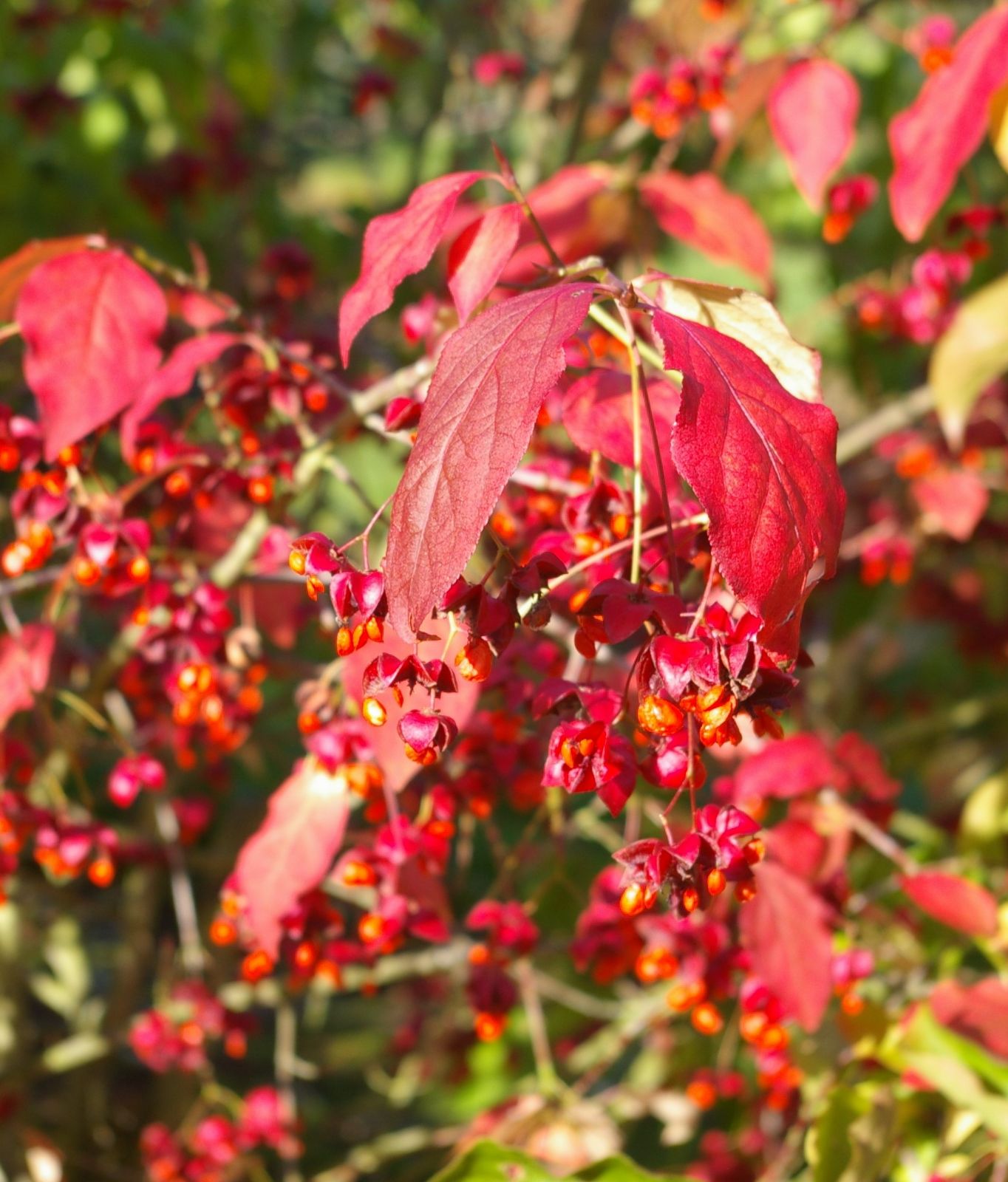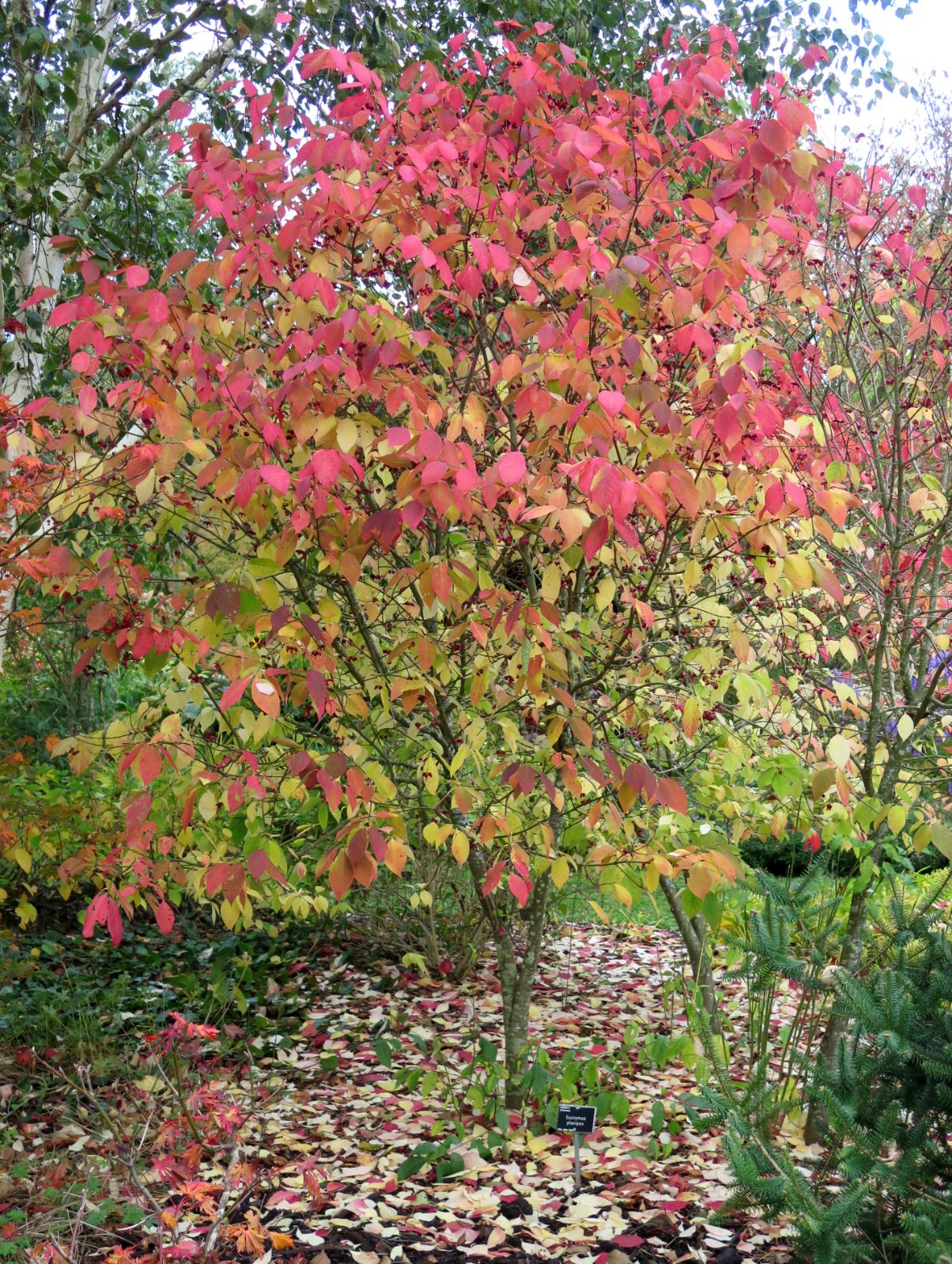Euonymus planipes
Credits
Article from Bean's Trees and Shrubs Hardy in the British Isles
Recommended citation
'Euonymus planipes' from the website Trees and Shrubs Online (treesandshrubsonline.
Genus
Synonyms
- E. latifolius var. planipes Koehne
- E. sachalinensis (Fr. Schmidt) Maxim., in part, not E. latifolius var. sachalinensis Fr. Schmidt
Other taxa in genus
- Euonymus alatus
- Euonymus americanus
- Euonymus atropurpureus
- Euonymus bungeanus
- Euonymus cornutus
- Euonymus europaeus
- Euonymus fortunei
- Euonymus frigidus
- Euonymus grandiflorus
- Euonymus hamiltonianus
- Euonymus japonicus
- Euonymus kiautschovicus
- Euonymus latifolius
- Euonymus lucidus
- Euonymus macropterus
- Euonymus myrianthus
- Euonymus nanus
- Euonymus obovatus
- Euonymus oresbius
- Euonymus oxyphyllus
- Euonymus pendulus
- Euonymus phellomanus
- Euonymus porphyreus
- Euonymus sanguineus
- Euonymus semenowii
- Euonymus theifolius
- Euonymus tingens
- Euonymus verrucosus
- Euonymus wilsonii
A deciduous shrub or small tree, closely akin to E. latifolius, and of similar habit and dimensions and with the same long, pointed winter buds. The leaves are like those of that species in most respects, but are coarsely toothed, and the stalk is not channelled on the upper side. The fruit is four- or five-lobed, as in E. latifolius, but differs in having the top conical; nor are the wings of each lobe flattened and knife-like as in E. latifolius. Except in these respects the two differ but little.
Native of Japan, Korea, the Russian Far East, and N.E. China; introduced to Kew from the Arnold Arboretum in 1895. It is quite as handsome a species as E. latifolius, both for its fruit and its red autumn colour, but only in recent years have its merits come to be at all widely appreciated.
E. sachalinensis (Fr. Schmidt) Maxim. E. latifolius var. sachalinensis Fr. Schmidt – Although closely related to E. planipes, this species is well distinguished by its purple or dark red flowers and its small, few-flowered inflorescences. Native of Sakhalin; probably not in cultivation. The species is typified by the plant of Sakhalin which Schmidt described originally as a variety of E. latifolius. Maximowicz later raised this variety to the specific level, and at the same time published a new description which, as is clear from the description itself and from the specimens he cites, includes plants which are really E. planipes.
In Japan, E. sachalinensis is represented by var. tricarpus (Koidz.) Kudo, distinguished by the fruits being three-lobed against five-lobed in the type.


